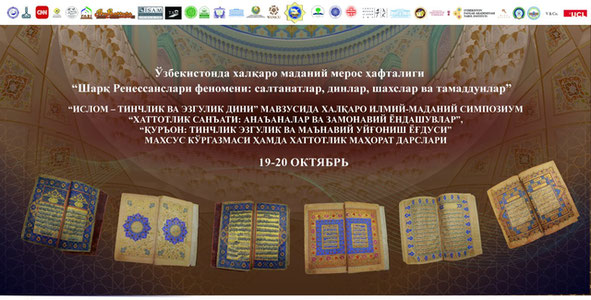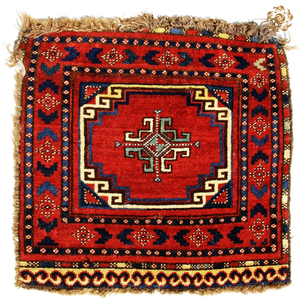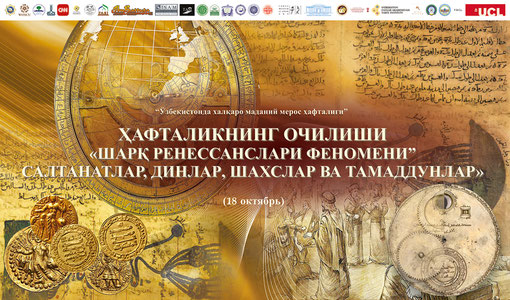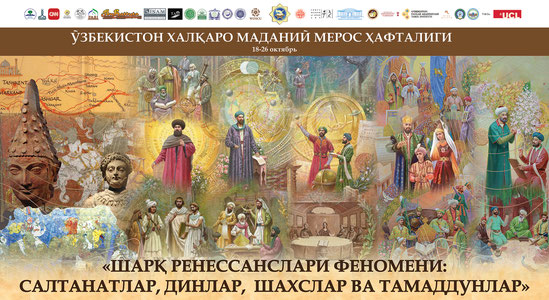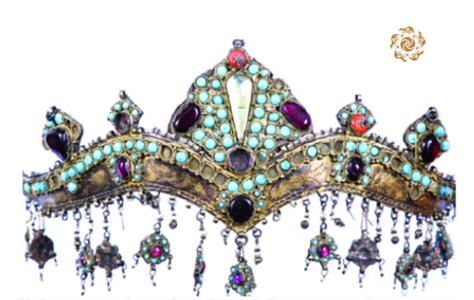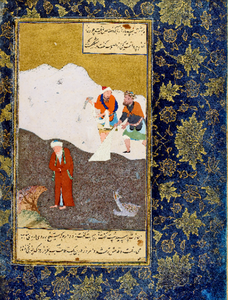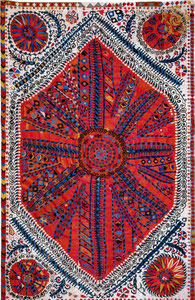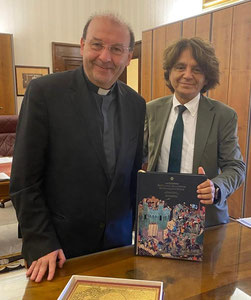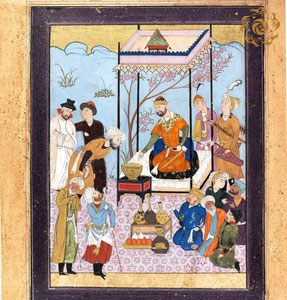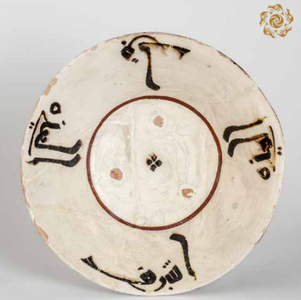The Hermitage collection of artifacts related to the cultural heritage of Uzbekistan is extremely extensive and has been formed for almost 150 years. The first materials related to Central Asia that appeared in the museum were several Bactrian vessels from the Siberian collection of Peter the Great. Later, the collections were replenished with diplomatic gifts from the rulers of the Bukhara Emirate, the Khiva and Kokand Khanates. After the conquest of the region by the Russian Empire, gifts presented by representatives of Bukhara and Khiva appeared in the museum. These include weapons, horse equipment, jewelry, fabrics, and books. Among the gifts from collectors, a special place is occupied by the offerings to the emperor from the merchant of the 2nd guild Mirza Bukharin (Mirzo Bukhari). Both the gifts themselves and even the box in which they were presented have been preserved. After the 1917 revolution, private collections were nationalized, and museum exhibits were "redistributed" during the reform. And in 1921, the Department of the East was created in the Hermitage, and a systematic study of the archeology of Central Asia began. Thus, the Uzbek SSR donated the famous Ayrtam frieze to the Hermitage, and research materials were received from Mizdakhkan, Paykend, Tali Barzu, and Kafir-Kala. After World War II, the collection was replenished with finds from expeditions to Central Asia, including monuments from the work of the Khorezm archaeological and ethnographic expedition, and Vasily Shishkin's excavations in Varakhsha.
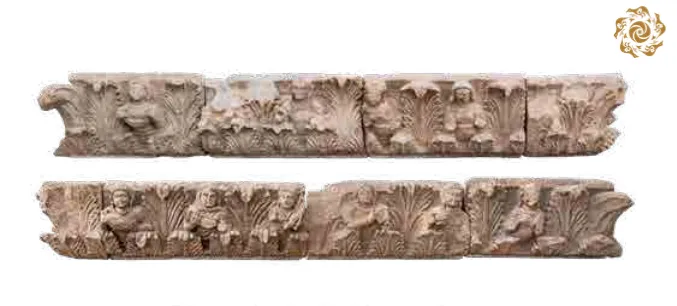
Ayrtam frieze
In the Hermitage, under the direction of Pavel Kostrov, a special laboratory for the restoration of monumental painting of Central and Middle Asia was created, and a method for removing, conserving and museifying wall paintings was developed.
Present Days
In 2010, a permanent exhibition "Central Asia in Antiquity and the Early Middle Ages" was opened in eleven halls of the Winter Palace of the Hermitage, where bronze cauldrons of the Sakas, rhytons of Nisa, Kushan reliefs of Termez, paintings and carved decor of Penjikent and Varakhsha, silver of the Sogdians and Khorezmians are presented. A continuation of the exhibition is also being prepared - five halls of art and culture of Central Asia of the Muslim era (from the 9th to the 19th centuries). In addition, the new Staraya Derevnya restoration and storage complex currently exhibits the most significant masterpieces of Muslim art in Central Asia. Five years later, in 2015, WOSCU Chairman Firdavs Abdukhalikov and a team of like-minded people proposed to the Hermitage management to publish an album dedicated to artifacts related to the republic, which took the museum staff by surprise. The reason for this was the lack of division of exhibits along the modern borders, as well as the lack of experience in preparing such publications. However, this challenge was accepted, and a keen interest was shown in the project. According to Lurye, it became immediately clear that one volume would not be enough. Therefore, it was decided to publish three volumes of albums: the first is dedicated to the pre-Islamic period, the second to the heyday of Islamic culture from the Abbasids to the Timurids, and the third to the emirate and relatively recent ethnographic times. Two volumes have already been published, and work on the third is ongoing.
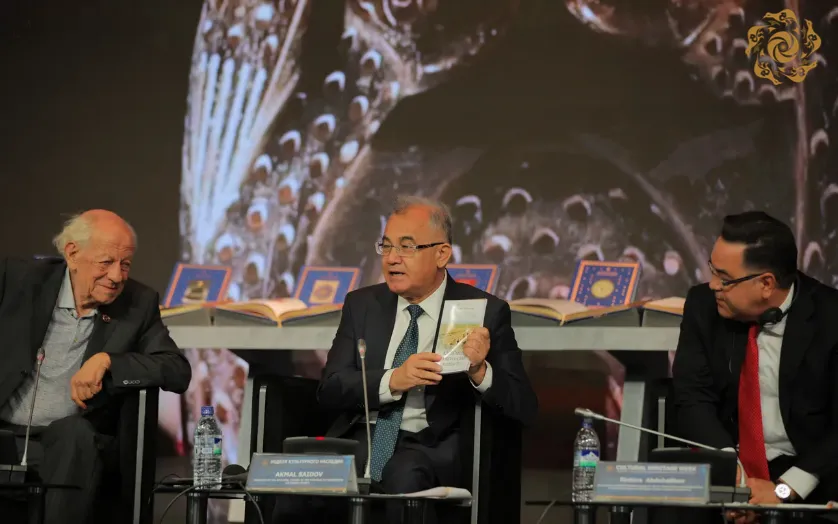
Edward Rtveladze, Akmal Saidov and Firdavs Abdukhalikov
The list of items for each album was compiled quite meticulously. Some artifacts underwent restoration cleaning. The Hermitage prepared new photographs, cards for items, and introductory articles. The outstanding archaeologist Edward Rtveladze became the scientific editor of the first and second volumes.
The first volume was compiled according to the geographical principle: Bactria, Sogd, Chach, Fergana, Khorezm. Lurye himself took on the topic of Khorezm. In Khorezm, there were subsections on terracotta sculpture, sculpture and painting of Toprak-kala, ossuaries, and silver vessels. At the end, there were two special sections: epigraphic monuments and numismatic materials. As the scientist emphasizes, the volume included a number of previously unpublished items, and many others saw the light of day for the first time in high-quality color printing. The second volume was divided according to chronology: pre-Mongol Maverannahr of the 9th-12th centuries, the Mongol state of the 13th-14th centuries. and the Timurid reign, 14th-15th centuries. The sections were divided by types of products: hearths, ceramics, writing utensils, glass, toreutics, jewelry. There were sections on the materials of individual archaeological expeditions: Paykend, Kuldortepa, Munchak. Part of the second and third sections is devoted to tiles. There are chapters on the gold filigree of the Shakhrisabz treasure, the Gur-Emir portal, the lamps of the Khoja Ahmed Yassawi mausoleum, epigraphic decor, numismatics.
Pavel Lurye
Finally, the third volume, which is only being prepared, will contain examples of monumental art of the Sheibanids and subsequent dynasties, diplomatic gifts, weapons, fabrics, clothes, ceramics, jewelry, horse harnesses of the ethnographic period. Many of these items have not been published before. At the same time, Lurye suggests that his colleagues from WOSCU not limit themselves to three volumes. He is sure that attention should be paid to the monuments of monumental art of Khorezm from the turn of antiquity and the early Middle Ages, originating from the "High Palace" at the Toprak-Kala settlement in Karakalpakstan. According to the historian, the Hermitage has more than a hundred storage units from Toprak-Kala. These are wall paintings and relief clay sculptures. The artifacts came from the Leningrad branch of the Institute of Anthropology and Ethnography (Kunstkamera), where they were transferred by Sergei Tolstov, the head of the Khorezm archaeological and ethnographic expedition and director of the leading Moscow institute. In the Kunstkamera, they were stored unopened in boxes and trays.


